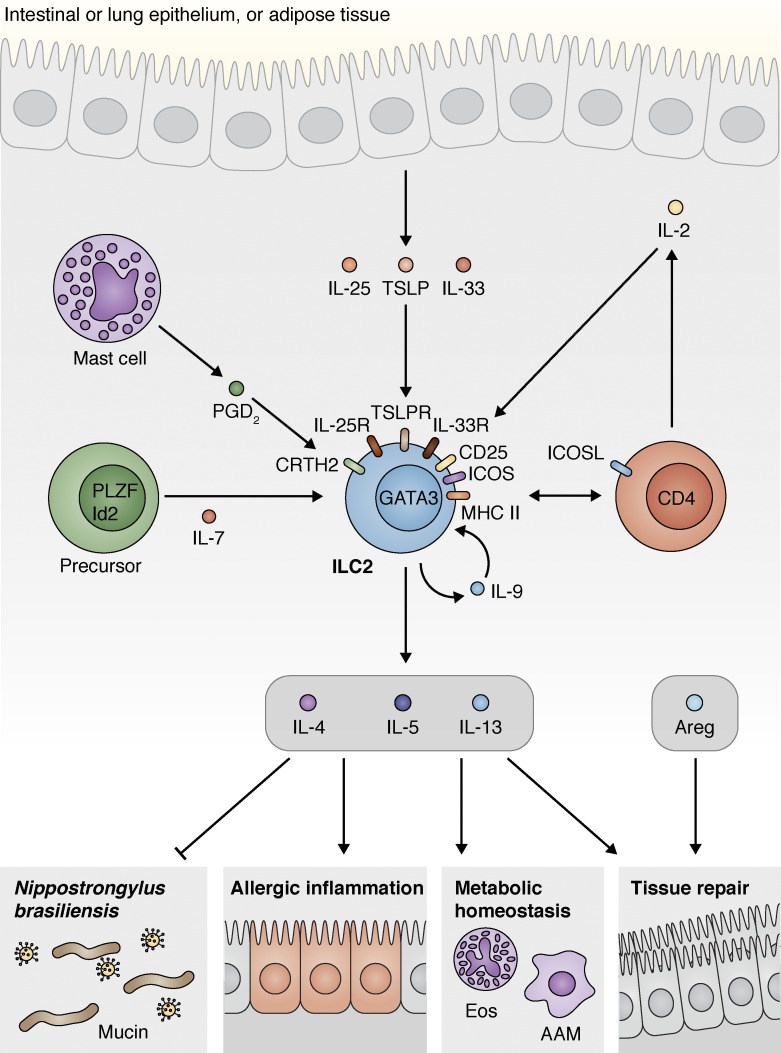Figure 2.
ILC2s influence inflammation, immunity, tissue repair, and homeostasis through interactions with hematopoietic and nonhematopoietic cells. ILC2s that express GATA3 differentiate from a progenitor cell that expresses a variety of transcription factors, including PLZF and Id2. These progenitors respond to IL-7 and other factors as they differentiate. Once mature, ILC2s sense multiple signals, including cytokines that can be derived from the epithelium, including IL-25, IL-33, and TSLP, and mast cell–derived eicosanoids such as PGD2 and others. Activated ILC2s produce type 2 cytokines, including IL-4, IL-5, IL-9, and IL-13. During N. brasiliensis infection, these cytokines are protective and elicit mucin production that induces helminth expulsion. These cytokines can also cause type 2 inflammation associated with allergic disease in multiple tissues. IL-9 feeds back in an autocrine loop to promote ILC2 survival during inflammation, and IL-4 produced by basophils also supports ILC2 population expansion (not depicted). The proinflammatory effects of ILC2s are balanced by their ability to promote homeostasis and tissue repair. In this context, type 2 cytokines derived from ILC2s support wound healing and maintain eosinophil (Eos) and alternatively activated macrophage (AAM) populations in adipose tissue, which, together with ILC2-derived met-enkephalin peptides, promote and support the lean state. Finally, activated ILC2s can produce growth factors that directly act on the epithelium to repair damaged tissues.

